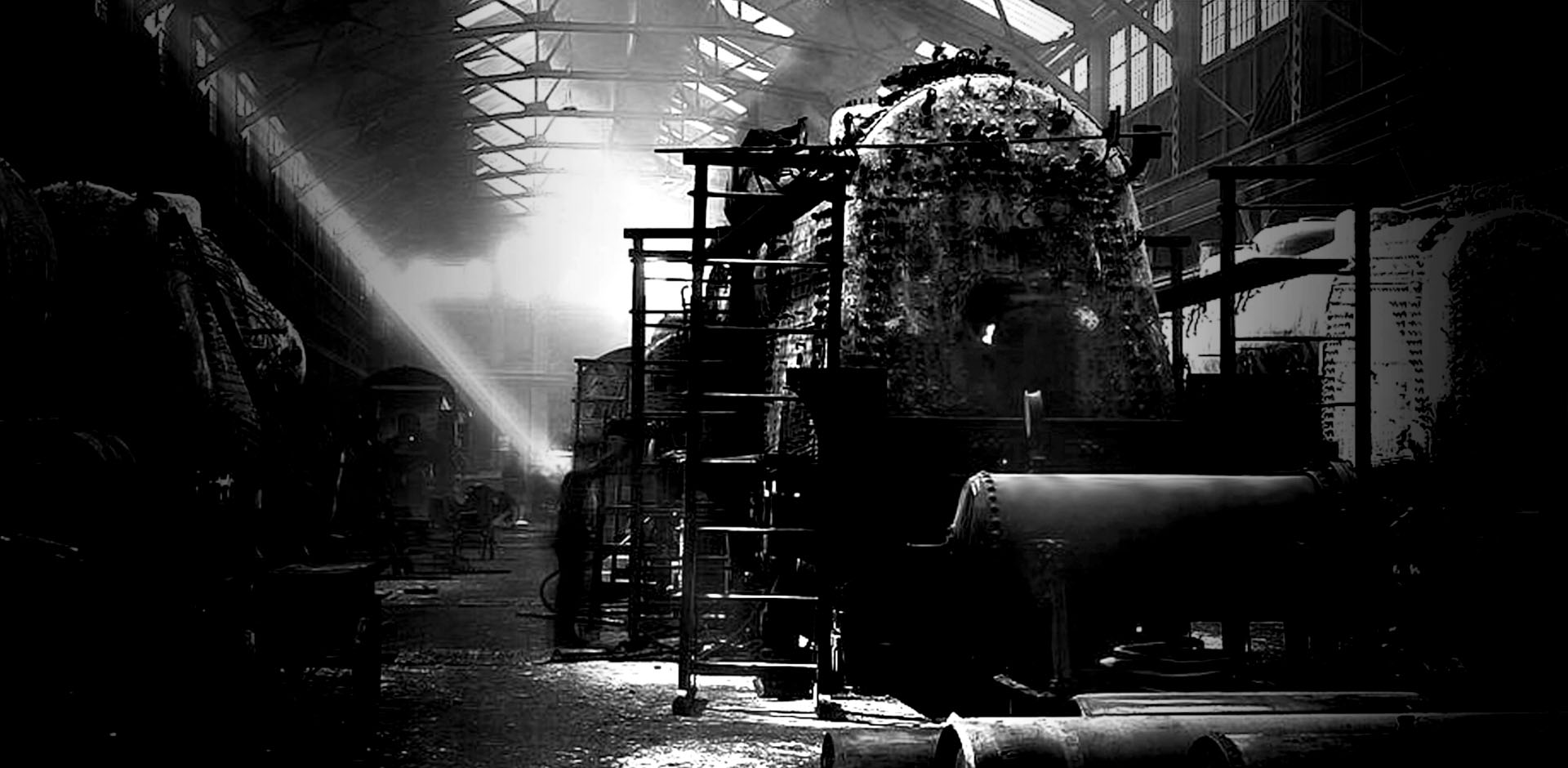MUSEUM
The Ball Museum reveals the rich history of the Ball Watch Company and vividly illustrates the impact that Webb C. Ball and Ball Watch had on America. We are proud to present this fine collection of vintage Ball watches, historical documents and other Ball material.
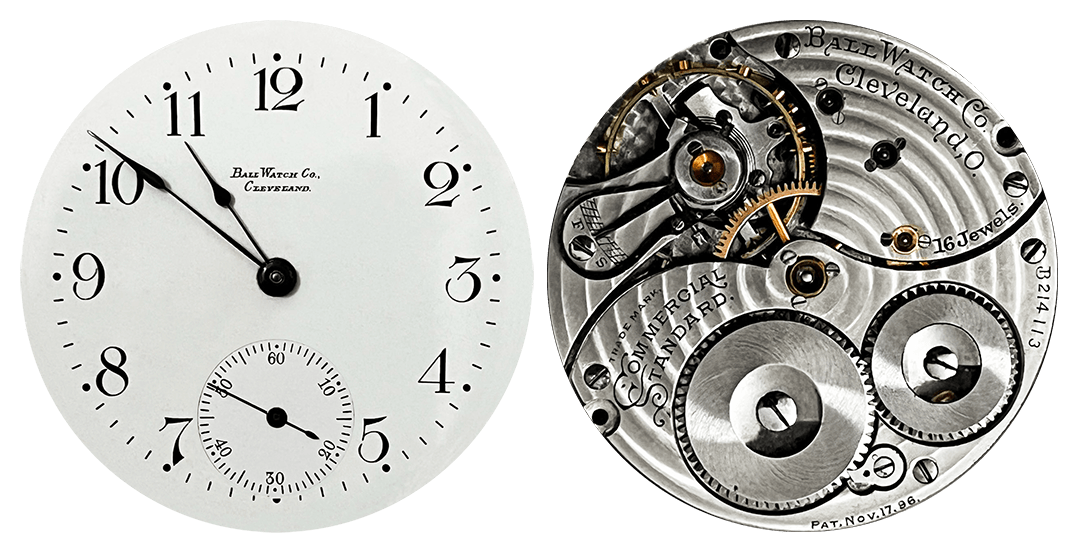
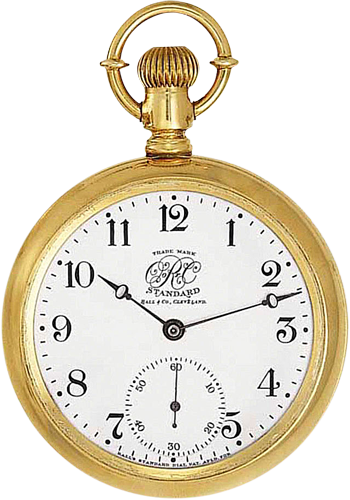
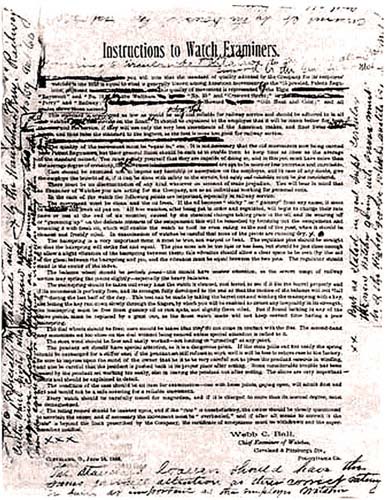
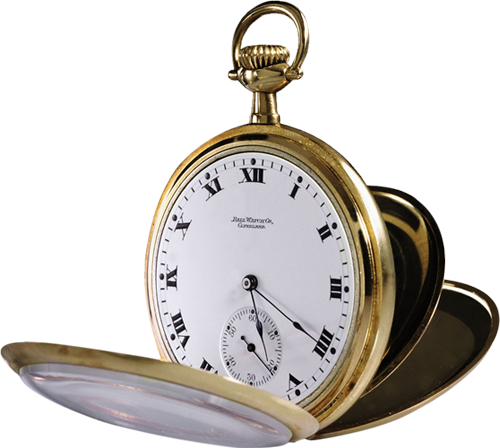
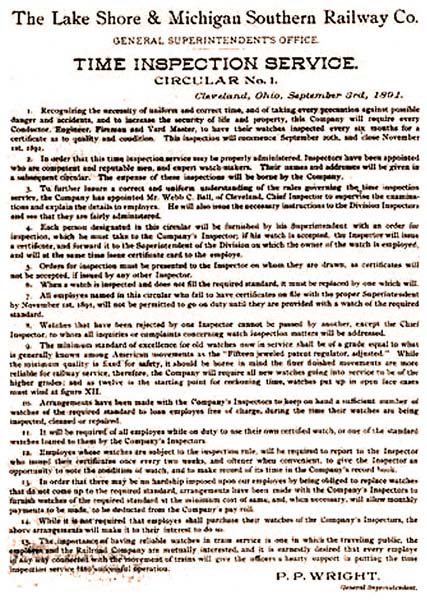
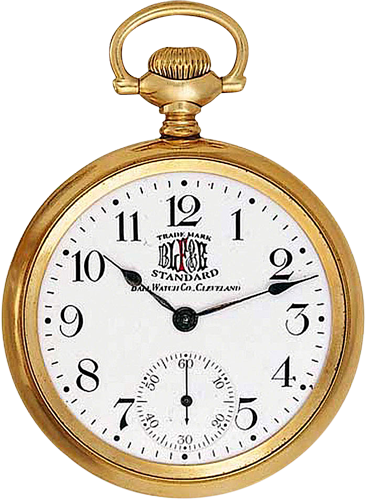
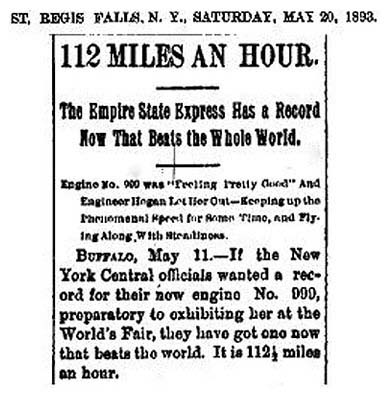
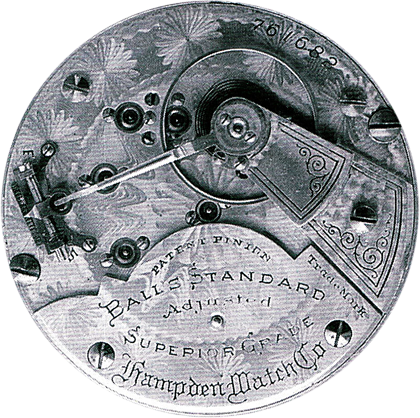
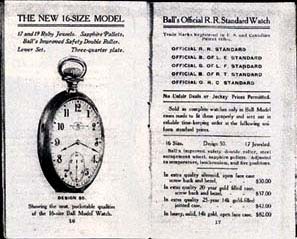
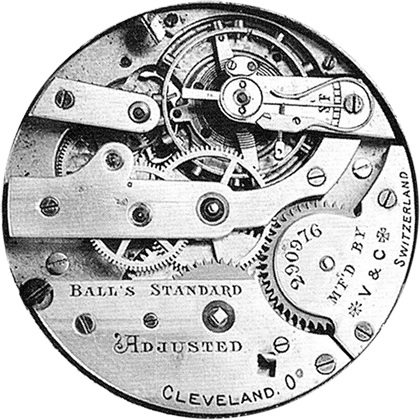
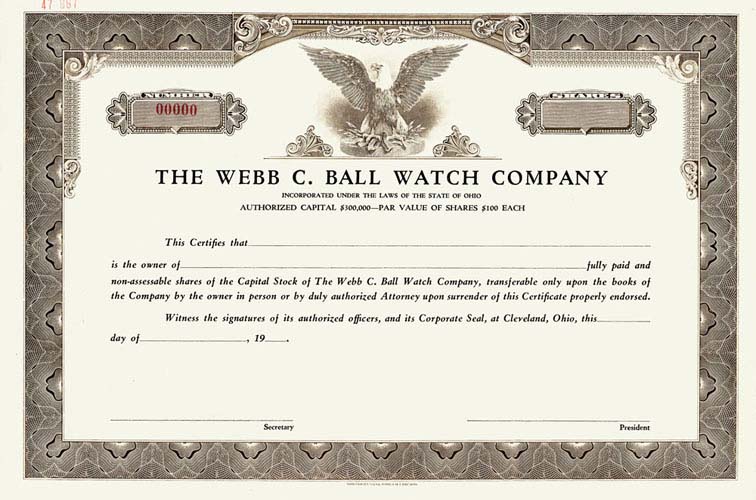
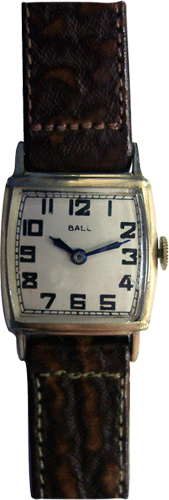
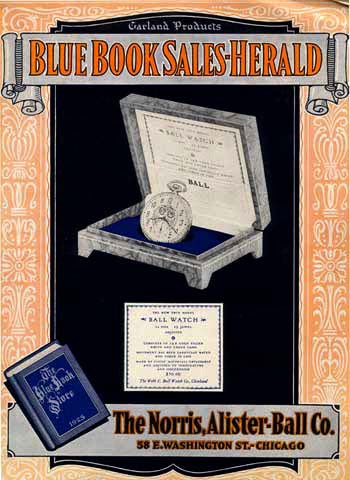
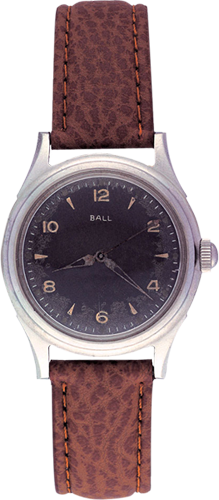
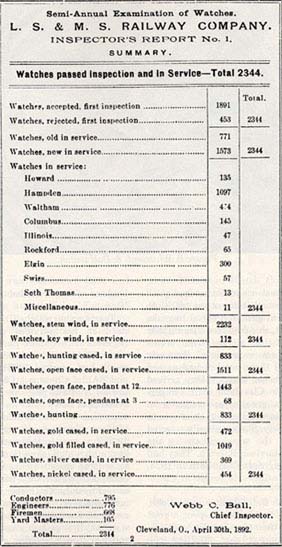
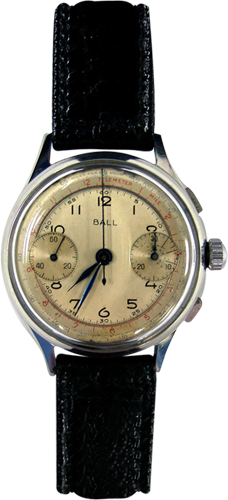
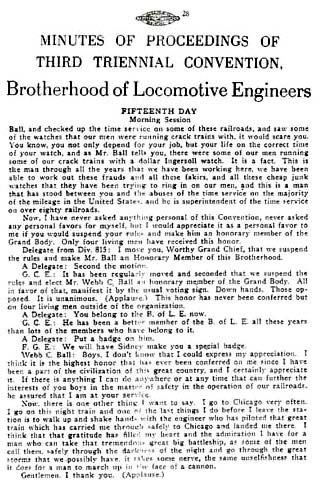
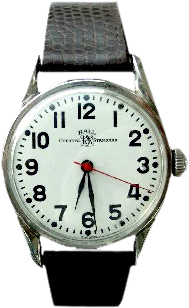
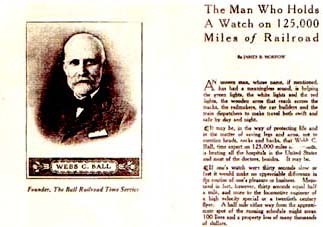
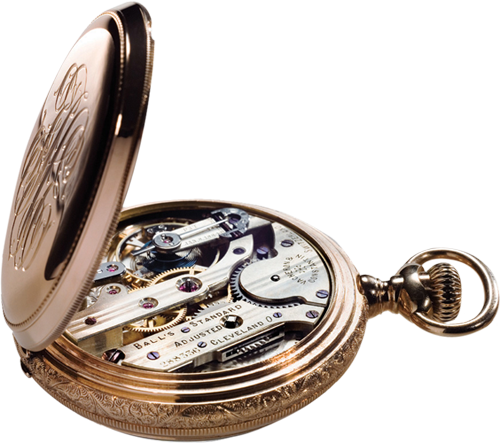
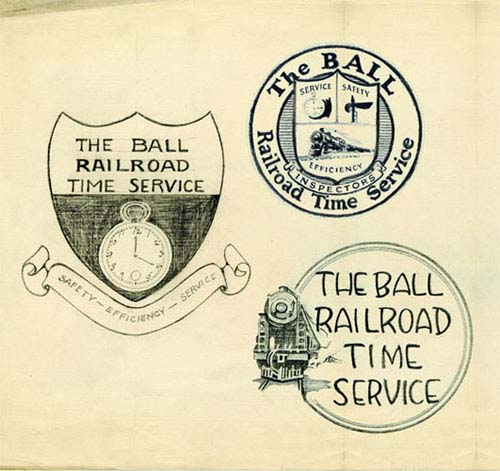
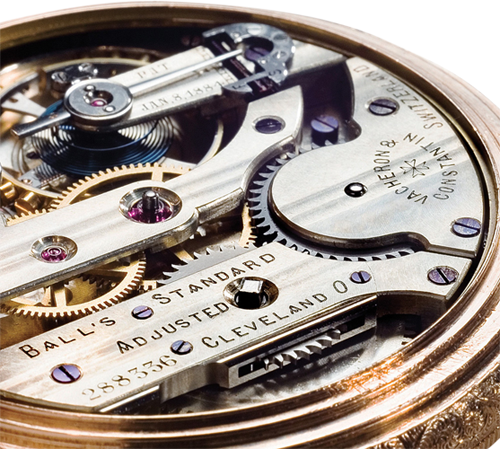
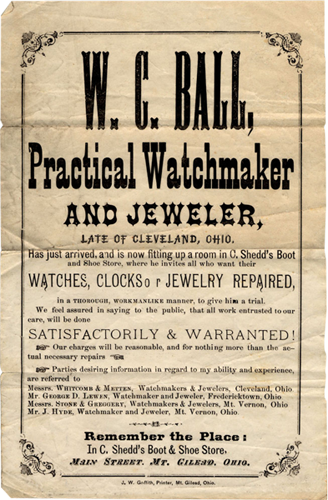
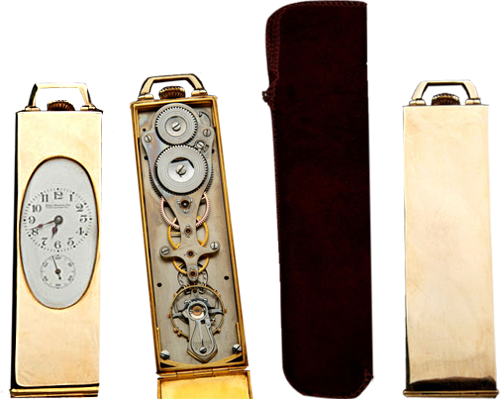
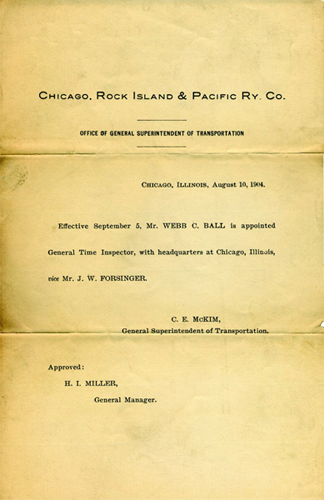
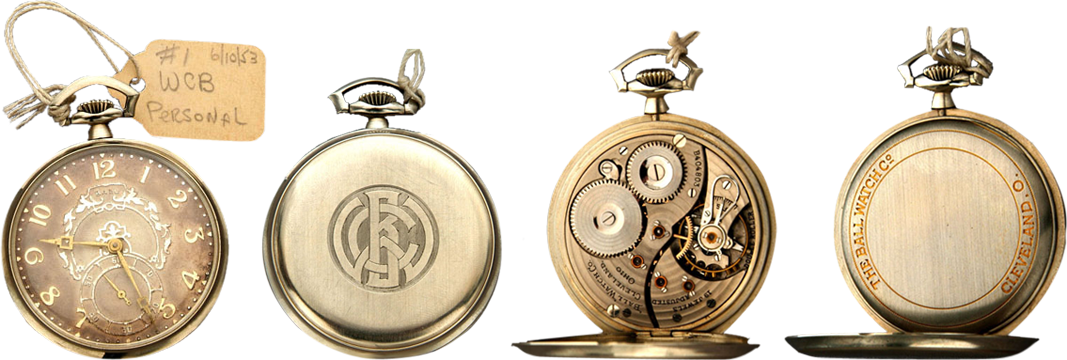
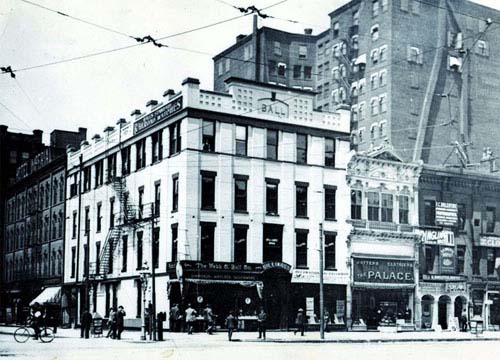
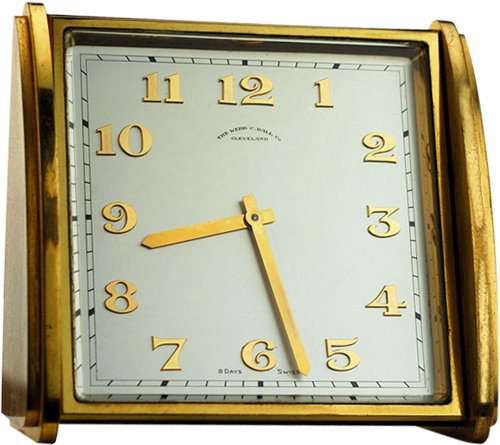


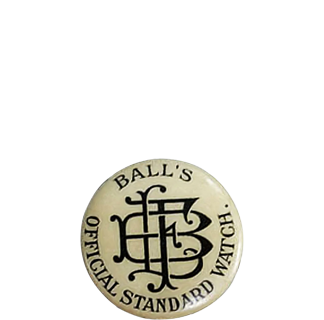
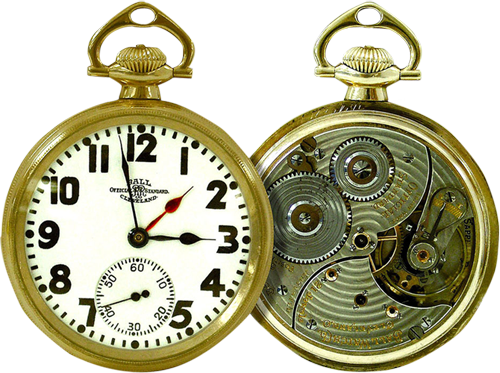
This BALL pocket watch (serial no. B2141130, patented in Nov 17, 1896) was an essential tool used by an industrial icon, Henry Ford. It has an accuracy of within 20 seconds a week. It now sits at The Ford Museum."
BALL & Co., Cleveland (Ohio). Order of Railway Conductors, No. 307412, Series VIII, circa 1893. Very fine and exceptionally rare, 18K gold screw back and bezel, Brotherhood railroad watch.
Archival document "Instructions to Watch Examiners" circa 1888. Outlines the system Webb C. Ball implemented as Chief Examiner for the Cleveland & Pittsburgh Division. Grew into the system that covered 75% of American railroad. Shows original notes & amendments discussed.
BALL Watch Co., Cleveland (Ohio). Roman index and sunk subsidiary seconds, white enamel dial, 18-size, 17 jewel movement with inner dust jacket, circa 1898. Very fine, gold-plated 'Commercial Standard' watch.
Archival document "Time Inspection Service, Circular No. 1" circa 1891. Shows system implemented on Lake Shore & Michigan Southern Railway after the Kipton Disaster. Spurred evolution of Ball store into BALL & Co. - watch inspectors, retailers, and watch company.
BALL Watch Co., Cleveland, (Ohio). Brotherhood of Locomotive Fireman and Engineers, No. B269465, circa 1922. Very fine, yellow gold-filled, keyless, Brotherhood railroad watch.
Archival newspaper account "112 Miles An Hour" circa 1893. Announces the new speed record of the Empire State Express No. 999, an engine whose high-speed route was planned & timed by Webb C. Ball. Ball announced a commemorative '999' high-grade pocketwatch in 1895 that remains among the finest examples of the Railroad Watch.
BALL & Co., Cleveland (Ohio). Hampden Watch Co. 18-size, 17 jewel movement to BALL Standard, No. 761682, circa early 1890s. Signed "BALL's Standard - Superior Grade - Adjusted"
Archival BALL Salesman's Manual "The New 16-size Model" circa 1896. Shows growth in collections to include 16-size railroad watches. Details several associated Ball trademarks & patents, with pricelist at bottom.
BALL & Co., Cleveland (Ohio). Vacheron & Constantin, Switzerland 16-size movement with swan's neck regulator to BALL Standard, No. 290976 circa 1890s. Signed BALL's Standard - Adjusted
First share certificate of BALL Watch Company. No. 00000, framed & preserved to commemorate the incorporation of The Webb C. Ball Watch Company in Cleveland (Ohio), November 1897.
BALL Watch Co, Cleveland (Ohio). Circa 1920s. Blued hands, Arabic index, yellow gold-filled barrel case wristwatch.
Archival BALL Salesman's Manual "Blue Book Sales-Herald" circa 1925. Produced by Norris, Alister-Ball Co., Chicago, Illinois. By early 1900s, Ball maintained offices in Cleveland, Chicago and Winnipeg to serve the railroads. Over 30 watches were approved for use on the 54 railroads overseen by Ball.
BALL Watch Co., Cleveland (Ohio). Circa 1940s. Skeleton hands, Even Arabic index, military style steel wristwatch.
Archival Report "Semi-Annual Examination of Watches" circa 1892. Produced for Lake Shore and Michigan Southern Railway by Webb C. Ball. Details watches carried by railroad men. Majority of watches carried by Conductors, Engineers and Firemen.
BALL Watch Co., Cleveland (Ohio). Brotherhood of Ball, Cleveland (Ohio). Circa 1950s. Two register chronograph with telemetric scale and pulsemetric scale wristwatch.
Archival document "Proceedings of Third Triennial Convention" circa 1907. Brotherhood of Locomotive Engineers suspended their rules to honor Webb C. Ball and appointed him as 'Honorary member of the Grand Body'.
BALL Watch Co., Cleveland (Ohio). 'Official Railroad Standard' Trainmaster, automatic ETA movement, circa 1978.
Archival Report "The Man Who Holds a Watch…" circa 1921. Biography by The Horological Institute of America honoring Webb C. Ball shortly before his death in 1922.
BALL & Co., Cleveland, Ohio. Vacheron & Constantin, Switzerland, No. 288336.
Archival sketches "The BALL Railroad Time Service" circa 1910s. Original handmade sketches used in producing the new Trademark for the Time Service.
Some of the earliest watches signed "BALL's Standard" were Swiss made. Despite its decorated hands, this watch's movement would have passed inspection in the 1890s.
Archival advertisement circa 1880s. Webb C. Ball announced the opening of his small repair shop, using his former employers Whitcomb & Metten as references.
This rare "salesman's watch" was used to demonstrate the inner workings of BALL pocket watches to prospective retailers and customers. The major components of the BALL Standard Watch are laid out vertically to show the quality and finish.
Archival document "Chicago, Rock Island & Pacific Railway" circa 1904. This letter is one of many appointing Webb C. Ball as General Time Inspector.
This is one of Webb C. Ball's personal watches. It demonstrates his trademark circular damaskeening on the movement and proudly displays his "WCB" monogram on the case back.
Archival photo of BALL storefront. Webb C. Ball's busy corner store was the initial headquarters of the BALL Watch Company and also sold fine jewelery and silverware.
The Webb C. Ball Co., Cleveland (Ohio). Circa 1930s. 8-day manual winding Swiss movement. Thick applied numerals and satin-finish dial.
Archival photo of the "No. 999." The Empire State Express "No. 999" was the train that first broke 100mph, timed & scheduled by Webb C. Ball himself. It was the fastest vehicle in the world.
Sidney Ball took over the company after his father's death in 1922. Here is a very fine, "SYB" monogrammed watch carried by Sidney for many years.
Early BALL badge with insignia of Brotherhood of Locomotive Fireman (BLF). The BLF badge was among many gifts from BALL Watch Company coveted by the men of the Railroads.
BALL Watch Co., Cleveland (Ohio). Two-time zone movement to Official Railroad Standard. The red GMT hand could hide behind the main hour hand when not needed.

